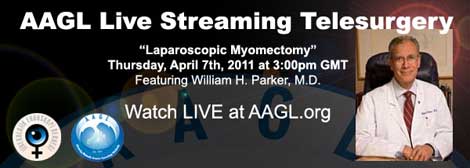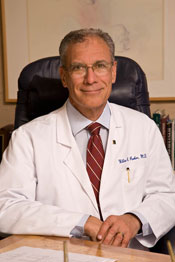Hi Dr. Parker,
My ob/gyn strongly suggested that I start thinking about having a hysterectomy as well as having my ovaries removed.
My background is:
49 years old, No children
Uterine Ablation in 2005
Diagnosed with Endometriosis 2006 by laparoscopy -Stage III with two or three endometriomas on one ovary.
Family history – mother diagnosed with breast cancer. 1st case – 59 years old – lobular carcinoma. 2nd case – 72 years old – ductal carcinoma. Both times the breast was removed.
My Mom tested negative for the BRCA gene.
My endo does not cause regular pain – only when I have my period or am ovulating. Due to the ablation and my age, I am not even sure how often it has been happening, maybe once or twice a month for a couple of days.
My Dr. is concerned about my risk of ovarian cancer. I have been researching this subject and am more confused than ever. It seems like rearranging deck chairs on the Titanic. I can remove the risk of ovarian cancer and cut my risk of breast cancer in half. But, the estrogen add back brings my breast cancer risk up but not as much if I stay on it for a short duration at a low dose. But, then I run the risk of stroke, bone loss, etc.
Of course, I also have a greater risk of having clear cell carcinoma which would be difficult to detect until it is advanced.
I feel that there is no real solution. I’m just trading one problem for another. I read your article on ovaryresearch.com but I don’t know how to interpret the data as it applies to someone like me.
Any insight would be appreciated.
Thank you,
L
L,
You are right to be a bit confused by all this. First, your mother’s history of non-BRCA breast cancer would NOT increase your risk of clear cell carcinoma of the ovary related to endometriosis – these are unrelated conditions. While endometriosis of the ovary may increase the risk of ovarian cancer, the risk goes from about 1% in the general population to 2% for women who have had endometriosis; or, you have a 98% chance of not getting ovarian cancer .
If you were to choose to have a hysterectomy with removal of your ovaries, you would only need to take estrogen (again, if you choose to take anything). In the Women’s Health Initiative study, there was no increased risk of breast cancer for women who took estrogen only (risk was slightly increased only for women on both estrogen and progestin). In our analysis of the Nurses’ Health Study data, women who took estrogen after removal of their ovaries appeared to have much less risk of developing cardiovascular disease than women who had their ovaries out but did not take estrogen (during 24 years of follow-up).
So, both risks seem to be very, very low.
I hope this is of some help,
Bill Parker, MD




